Text
A brief history of Shojo manga and anime [part 1]
Shojo is a demographic that its target audience is mainly girls and young women. It has grown many generations and continues to do so. Many believe that it’s not as interesting as Shonen, but actually Shojo has a rich history and background. In this article of two parts, a brief history of shojo is going to be examined; analysing the art, tropes, plots and evolution.
Post-War Shojo


In order to fully examine shojo manga, firstly it needs to be noted that for a few decades before the Second World War, shojo magazines appeared, slowly creating the aesthetic of the girlish teen culture, still maintaining the dreamy, flowery maiden-ish style.
In the 1950s the plots of shojo manga seemed to be limited on stories about elementary school girls, decreasing plots that older girls and young women would be interested in. Also, almost all the mangakas were men, so the storytelling was focusing on what men perceived the morals of female should be. Apart from that, a few iconic shojo manga made their debuts, including Osamu Tezuka’s “Princess Knight”, which set the ground for many action shojo afterwards and which is still influential today. It was also the first shojo manga that had an anime adaptation, with an art influenced from Disney. Nevertheless, the shojo manga art style was still indifferent from the rest of the demographics.
But the shojo art style had slowly started changing. Nakahara Jun’ichi was working in a girls’ magazine in the 40s and was the one who introduced the shojo-style eyes. Macoto Takahashi was the one who took inspiration from this style and started drawing it in his manga. By the late 1950s, sparkling eyes and three panels with an one-piece character on the side -characteristics that are integral in the shojo demographic-, were more and more standard. “Sakura Namiki”, by the same mangaka is one of his most known stories, where its art style seemed like a story book, but the characters and the decorations were very much shojo, though it goes back to pre-war Class S”, when there weren’t stories focused on female and male romantic relationships, and instead of that, they focused on relationships between girls, that usually remained spiritual and platonic. “Arashi O Kete” also by Macoto Takahashi is a good example of creating the dynamic presentation of shojo.
By the mid 1950s, many shojo magazines started forming and some of them focused exclusively on shojo stories. Kodancha, Shueisha and Ribon were the most popular.
60s


In the 1960s, a change is that from monthly, many shojo magazines switched to weekly, increasing the shojo stories. Magazines had also allowed readers to submit their manga for publications, thus many amateur artists became professional mangakas. By the mid and late 1960s, many young women made their debuts in the manga industry, slowly forming a circle of creating stories by women for women, something that was rare up until then. Shojo friend and Margaret were two shojo magazines that were formed back then.
Nishitani’s Yoshiko “Mary Lou” is a very important example, as it was the first shojo manga with the romantic comedy formula, featuring normal characters in a normal school. The win of women’s volleyball team in the Olympics, inspired Chikako Urano to write “Attack no. 1”, the first female sports shojo manga. Portraying girls in taking part in other more “masculine” sports in manga was new back then, as it was more standard for female characters to be portrayed performing ballet or horseback riding. It also became an anime television show.
Hideko Mizuno was the first to adapt ideas from American television movies and series, such as “Sabrina”, as “Sutekina Cora”, though previously there was a shojo anime series called “Sally the witch”, which was inspired from “Bewitched”. Other magical girls anime were “Himitsu no Akko-Chan”, where on contrary to Sally, who was a witch from the beginning, the heroine had magic accessories to transform, marking the start of the evolution of magical girls transformation.
In the late 1960s, serious issues started being more examined in shojo manga, as Yumiko’s Oshima Oshima “Tanjou” deals with an unwanted pregnancy of a teenage girl, dealing with the question of abortion. Hideko Mizuno’s manga “Fire!” is an interesting mention as it has a male lead as the main character, portraying the soul of the music in the late 1960s. It was also the first shojo manga that contained sex scenes. On contrary with the 1950s restraining portrayal of emotions, along with the 1960s more mature content in shojo manga, the panels were emotional-driven and the characters were portrayed with an outburst of emotions.
70s


During the late 1960s and early 1970s, the second wave of feminism started spreading and with this, combined with the readers who grew up to young women, demanding variety in plots, an emergence of more complex and graphic stories appeared. The storytelling had the tendency to be extremely melodramatic and romantic but with a dose of pessimism. Realism and logic was many times missing, and passion, emotions and feelings were pretty intense. It was also the start of sub plots. 70s Shojo manga is a beautiful, flowery, epic journey that is unforgettable. It’s pretty much the golden era of shojo, filled with many complex themes, more so than any other era after.
As it’s natural, shojo is a synonym for romance, so the romance genre was always present. Unlike the previous decades though, epic romances came and replaced the everyday life, simple stories. Period dramas especially, became very popular. Classics such as Ryoko Ikeda’s “The Rose Of Versailles”, which elegantly mixes facts and fiction of the French Revolution, Yumiko Igarashi’s ode to the orphan genre “Candy Candy” and Waki Yamato’s love letter to feminism and romance “Haikara-san ga Toru” are great examples of this. Each one of those also had their own television show. Those stories have in common the fact that their plots are as complex as their characters. They have the tendency to have many things going on simultaneously, with a cast of many characters and with strong female leads. In many ways they were inspired from classical literature, both international and Japanese. The mixture of 70s shojo tropes, such as tragical events, melodrama, over the top situations, along with inspiration from the classics, makes those stories an irresistible package of shojo. Being driven by emotions and drama, a variety of over the top portrayal of facial expressions and movements were very much presented.
The sports genre wasn’t missing from the shojo portfolio, as after Urano Chikako’s “Attack number #1”’s success, the following of other titles such as Sunika Yamamoto’s manga about tennis, “Aim for the ace” was pretty logical. Even though sports is a word that can describe only its area, ballet and acting can still fit this genre, as the physical determination of the heroines is pretty much the same (Ballet is a sport too though, but it contains acting too). So, Suzue Miuchi’s classical story about acting; “Glass Mask” and Kyoko Ariyoshi’s “Swan” are great examples of this. “Glass Mask” is still ongoing, marking the longest running shojo manga of all time. It also has several anime adaptations, from the passing decades, with many differences in aesthetic and technology. This legendary manga has its main focus in acting, different acting techniques and character grown. Its uniqueness also lies to the fact that there are many stories inside the story, as the reader gets to experience different plots from all the theatrical plays that are featured in the manga. This genre also emphasises on relationships that are not romantic, on contrary to most of shojo manga, as its main focus is rivalries and, team spirit and characters building a bond with each other or a mutual respect, through their same passion for their work.
There is a variety of stories in the sci-fi genre also, with Moto Hagio’s “They were Eleven” and Keiko Takemiya’s “Toward the Terra”, being two of the most iconic. Though the sci-fi genre can be all about futurism, so as the time goes by, older sci-fi stories may be considered as dated, it’s still interesting to see through those stories how people of that time were perceiving the “future” through art and storytelling.
The first isekai Shojo, that has period drama and fantasy elements is Ouke no Monshou by Chieko Hosokawa, that is one of the longest running shojo manga.
The horror genre is interesting as well. Ashibe Yuuho’s “The bride of Deimos” is the most characteristic mention of this genre, that mixes horror, romance and mythology. Watanabe Masako’s “Saint Rosalind” is also a horror manga, with gothic elements. Moto Hagio’s epic vampire story “The Poe Clan” follows the tradition of classical gothic literature with a pretty, fashionable cast of characters.
The most iconic characteristic of the 70s shojo is the “24 year group”, which is the definition of various female mangakas who made their debut in the late 60s and who explored themes that were heavier than the average. Shojo ai and Shonen ai were pretty popular back then among the shojo genre’s audience, so such stories were too. Moto Hagio’s “Heart of Thomas”, Keiko Takemiya’s “Kaze To Ki No Uta”and Ryoko Ikeda’s “Oniisama e” are one of the most popular titles. Moto Hagio was the one that introduced the early 20th century boarding school formula in the Shonen Ai genre, with androgynous boys and elegant girls. Stories with this formula, both in shonen ai and shojo ai, featured tortured characters in a complex plot, or characters who became evolved with the problems of other characters and which affected them too. It needs to be noted that the one-shot manga “Shiroi Heya no Futari”, is considered to be the first Yuri manga that has ever been published. Stories about homosexuality often had a sad ending, with their characters doomed to die tragically, or to never see each other again. Apart from those genres, the 24 year group examined other serious issues too, such as philosophy and psychology. Yumiko Ooshima’s “Banana bread pudding” is an interesting example, as it explores mental illness and existential questions.
The art was all about elegance. The panels were simple, but many times the characters were fleeing from the traditional panels and their whole silhouette was showing from closer. The background was filled with flowery decorations and stars, as it escorted the inner monologue of the characters, that co-existed with the dialogues. The characters had thin and tall body types, the girls were pretty and men were handsome and sometimes androgynous. Their facial expressions were very intense in order for their thoughts and feelings to be emphasised; galaxy eyes, devious smiles and laughs, fatal posses and lots of crying were pretty common. The eyes were as sparkling as they can get, with stars drawn inside of them, or dramatic white eyes. The hair was bushy and the clothing was dashing, many times inspired from inter war era or Belle Époque, giving an undefined date. In “Oniisama e” and “Glass Mask” for example, many looks, such as dresses with puffed sleeves and accessories, give the impression that they were inspired from an older time, boosting the prestige of certain characters. The coquette aesthetic was always reflected in the fashion of the characters, with pastel airy dresses, hats with ribbons and patent leather shoes.
The anime art style was similar, though anime techniques were still premature, so there weren’t many details in the art. Osamu Dezaki was the one who designed “The Rose Of Versailles” and “Oniisama E” anime art, with the curly airy hair, sharp eyes and sparkles and his influence in art was visible in other shojo anime as well, for example “Glass Mask”. “Candy Candy” had a total of 115 episodes, on contrary to the manga which had only 9 volumes. Candy Candy” and “Haikara San Ga Toru” anime adaptations had a mixed aesthetic from both of the early 20th century, where they take place and the 1970s, being historically inaccurate in many ways, but for that reason, charming in their own way.
Toei animation produced many magical girl series collectively known as the “Majokko series” meaning “little witch”, with series such as “Mahotsukai Chappy”, “Miracle Girl Limit-chan” and “Majokko Megu-Chan”. The latter was the anime that gave the genre its name and influenced major magical girl stories that followed from then onwards. The magical girl formula was still that of a little girl gaining powers and doing everyday activities or saving the city at some point of the story.
80s


The 1980s was the decade of pop culture from music and movies, to clothes. So the influence from all this media on shojo manga was clear.
After the success of 24 year group, with its complex stories, artists continued making stories that fitted the genre. But as the growing markets grew, shojo magazines were more demanding to diverse plots. Stories slowly started being more direct and simple, on oppose to epic romances of the past.
The art style became more simple and the dreamy, coquettish, doll like style, started decreasing, as the pop style with the influence from pop culture started rising. A more modern approach in clothes began, with plots supporting the pop rock fashion. Tada Kaoru’s “Aishite Knight” is a story with romance and rock music, with some of characters having wavy hairstyles with blonde, red and purple colours and colourful, flashy clothes. It also had its own anime tv show, transferring the 80s colours and bringing to life the music that fitted the story.
“Tokimeki Tonight” by Koi Ikeno, is perhaps the most read 80s shojo manga, which also became an anime TV show. The colour palettes and the clothing in the anime were nostalgic even in that era, as it mixed both the late 70s early 80s fashion. The story is about vampires and other monsters, but it’s also a slice of life romantic comedy, mixing creatively the epic difficulties that the characters have to face, with a more comedic and less serious approach. Another supernatural popular shojo manga during the 80s, as an honourable mention, that on contrary is a horror, is Junji Ito’s “Tomie”.
Other stories kept the epic melodrama and romance in the same tone as the 70s. Michiyo Akaishi’s “Alpen Rose”, mixes the orphan genre, with history, mystery and romance, keeping the refined fashion of the 70s shojo manga, yet adopting the 80s hairstyles. Yumiko Igarashi’s “Lady Georgie” is also a period drama soap opera, with Victorian era fashion and bishonen characters. Those manga also had their own anime tv shows.
Shonen Ai were still popular, though the early 20th century boarding school genre decreased and got replaced with modern era stories. Akimi Yoshida’s “Banana Fish” is the most significant example, about two doomed lovers, associated with a gang in New York City.
During the mid 80s, the magical girls genre started becoming more popular with studio Pierrot’s four anime series; “Creamy Mami, The Magical Angel”, “Pastel Yumi, The Magic Idol”,“Persia, The Magic Fairy” and “Magical Emi, The Magical Star”, all similar to “Magical Princess Minky Momo”. All those shows were about young girls, who gained the ability to transform into grown up model versions of themselves, becoming music idols and saving the world. They all wear colourful dresses, with tutu skirts, ribbons in their hair and shirts and most importantly, powers associated with bubbles, stars and flowers and cute, childlike, colourful accessories, such as magic watches, bracelets and necklaces. They all emphasised in music, as city pop was rising at that time, meaning that there were many songs in the shows.
237 notes
·
View notes
Text

Aishite Knight, 1982, by Kaoru Tada
The story is about a 18 year old girl, Yakko, who works in her father’s restaurant. One day she meets a lost young boy with a cat, who has been brought up with his elder brother, Go. Go is the leader of an emerging rock band called the bee-hives. When Yakko and Go meet, a romance starts, along with the 80s pop rock music of the 80s.
49 notes
·
View notes
Text

Hime-chan No Ribbon, 1993, by Megumi Mizusawa.
This cute magical girl story, is about a cheerful and tomboyish girl named Himeko, who one night, is visited in her room unexpectedly by Erica, a girl who is identical to her, only a little more refined, who is the princess of the Magical World. Erika explains that in order to prove herself worthy as a princess, she must give Himeko a magical item that she has created, which is a red ribbon. With this ribbon, Himeko can transform into anyone in the Human World for one hour, thus a story filled with comedy, romance, misunderstandings and friendships starts.
71 notes
·
View notes
Text
Female characters in retro shojo [70s edition, part 2]
In this series, the female characters in 70s shojo are being analysed. In part one, three of the most common types were examined; the “average” protagonists, the villains and the tomboys. In this article, other three very common types are being discussed.
The westerners innocent blondies
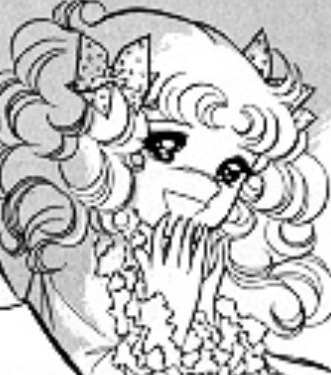


They are either orphans who just want to find a place to belong, princesses who dream about falling in love, or normal girls who always knew that they weren’t where they meant to be and they somehow discover that they are royalty or from a noble family. Either way, they are lively, innocent, but naive, so sometimes they may be betrayed or belittled, but they have a kind heart that knows how to forgive and have faith on people, so they make friends easily. Many times they are portrayed as Tomboys who love the nature and sometimes they get into trouble accidentally. They may seem helpless and dense sometimes, but despite all of this, they are actually very independent, as they may travel to the other side of the world all alone if they have to (they will make new friends wherever they go anyway) and if they need to, they can kick some serious ass too. But their most precious weapon is their inner strength to move forward, no matter what.
In “Candy Candy” Candy, is an orphan girl who goes through so many hardships. At first, her best friend Annie gets adopted, leaving her behind, but her troubles had just begun. She gets adopted by a rich family to keep company to their daughter, named Elisa who is the one who, along with her brother will constantly try to make her life miserable, firstly when she was staying at their house, then in the private school in England and afterwards when she was working as a nurse. But Candy makes many friends and has many allies and with her inner strength and lust for life, she overcomes all the obstacles that she faces. But that doesn’t mean that she doesn’t lose some of her dearest friends along the way. As she grows up she learns the hardships of life, but all those obstacles makes her only stronger and she never loses her hope for a better tomorrow.
In “the Rose of Versailles” we see Marie Antoinette evolving from an innocent and silly girl, to an irresponsible young woman, to a sorrowful, regretful, but determined queen. In the first volumes, she was still a child who just wanted to have fun and didn’t care about homework, traditions and preparations for being a queen. Later, during her first years as a queen she was portrayed as a naive person who didn’t make the right choices. Also, her friendship with Countess de polignag was a bad influence for her as she goaded her into gambling. But she was also well intensioned and just wanted her loved ones to be happy. Oscar always tried to be her voice of reason, but it wasn’t enough. Later it was more and more clear that she was spending her country’s money in clothes, gardening and building the petit Trianon to be with her inner circle, because she wanted to fill the void of being a woman who cannot be with her beloved. In the end, during the time that she was captured, before her decapitation, she surprisingly matured, realised what she had done all those years and wanted to make things right, but it was too late. Her final thoughts was about her family, Fersen and Oscar and she was proud and composured until her last breath. Throughout the story she was portrayed as an innocent woman who was sacrificed for the sake of politics.
In “Alpen Rose” Jeudi is an amnesiac girl who lives in Alpes with a boy named Lundi. She works as a nurse and has a quiet life, until a French nobleman captures her. Luckily she is very clever and with Lundi’s help they get away. And that’s how their journey towards finding Jeudi’s parents start. Along the way, Jeudi befriends many people, like a little girl with his brother and his girlfriend, a journalist who helps her a lot, a young couple and a mysterious musician named Leonard Aschenbach. Jeudi is different from other characters in this particular category because of her wit and courage. She also has a strong sense of justice and in matters of life and death, such as hiding from the nazis in the trains, planning traps for them and solving mysteries with the information that she gathers with the help of her friends, she succeeds. She also cares about the others and tries to see the good side in everyone. When she finally found her mother, she was asked from her grandparents to pretend that she wasn’t her daughter, because she was blind and in a fragile state, besides there was another girl who resembled Alicia (Jeudi’s real name) a lot. She had patience and it was repaid in the end.
Rosalie from “Rose of Versailles” was a poor girl who lived with her mother and her sister Joanne and she just wanted for others to be healthy and was happy with the simplest of things, like being able to buy bread and helping other children in the neighborhood who can’t afford to eat anything. When her mother is killed by Polignag who was in fact her birth mother, she is devastated and swears that she is going to get revenge from the nobles who don’t care about anyone else. When she befriends Oscar and Andre and stays at Jerjeyes household, she learns fencing, manners, horseriding and and history, to make her debut in Versailles. There, she meets the woman who killed her mother, her sister who suicides because of Polignag and managed to get away from her. She also felt disappointed with her other sister, Jeanne who betrayed her, but she was sad when she was killed. Later she meets and falls in love with Bernard, a friend of Oscar and they get married. As the years passed by, she evolved from a stereotypical nice girl, into an accomplished woman who can protect herself and the others. By the end of the story she was pretty much the only one from the main characters who stayed alive.
There are many other characters who fit this image, such as Georgie from “Lady Georgie”, who lived in Australia with a family that wasn’t hers and after meeting an English noble young man, Lowel, they fall in love, so she decides to follow him in England where she makes new friends, faces many enemies and also finds out about her real family. Lynn from “Lady Lady” travels to England to live with her father and her step sister and there she faces her evil step mother and her children, but she also finds many allies too.
Note: “Anne of green gables” was and still is popular in Japan, because of Anne’s passion for freedom and expression, the book’s “pastel” aesthetic, so Anne’s imagination and strength despite being an orphan, might have inspired those characters.
The worthy rivals
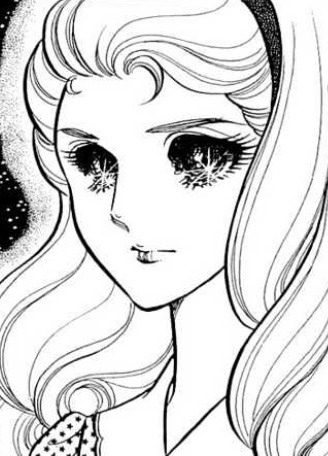
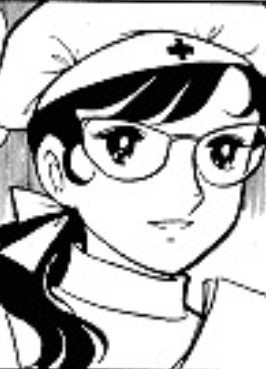

Those ladies tend to have what the main heroine lacks and they serve as her opposite. They tend to be considered prettier than the main characters and that circumstances are easier for them, something that isn’t true. They also appear to be elegant and refined, on oppose to the heroine who is more clumsy and tomboyish. They are usually more practical, down to earth and skilful than the main heroine, causing her to feel inferior to them. They may start off as the snobbish girls who look down on her and don’t take her seriously, due to her clumsiness and her easy going attitude towards work, but as the time goes by, they realise her real talent and her worth, causing them to consider her as a worthy opponent and expect great things from her. They may appear as almost perfect at everything they do, but the truth is that they are also insecure and they are having other types of problems, such as finding it very difficult to make friends, due to their cold nature, as they always appear antagonistic and determined to win. But as time goes by they may change their attitude with the help of the heroine, or better, with their own realisation.
Ayumi from “Glass Mask” is the greatest example of this. She is the daughter of a famous actress and a famous director and she was always on spotlight ever since she was a kid. She is beautiful, refined, elegant and admired by everyone, also considered to be a genius, as she excels at acting techniques, dancing and reciting. Her family environment helped her to pursue a successful career as an actress. But that doesn’t mean that she is rest assured as she always seeks to exceed her parents’ talent, so that people will see her as her and not as a daughter of famous parents. She also stated that no one truly knows how hard she worked in order to reach her current level. And that hard work was something that she succeeded on her own. When she encountered Maya for the first time and faced her on the stage, even though she (Ayumi) was better than her, she felt as though she was defeated. From that moment, even though it seemed like Ayumi had everything and Maya had nothing, Ayumi always thought that Maya had something that she lacked; a deep understanding of the characters that she portrays. Ayumi may excel at the techniques of acting, but she never manages to portray the true depth of emotion of each character. Her portraits of characters are accurate and true to the play, but Maya’s are refreshing and original. Even when it’s clear that she is way ahead of Maya, she always walks off stage with the feeling that she was defeated. As a rival, she is also very fair and she likes to unlimitedly challenge Maya in many ways. Of course, as the story progresses, Ayumi’s talent evolves and she becomes more open as a person.
In “Candy Candy”, Flanny is a girl who works as a nurse in the same hospital with Candy. She is the best of the nurses there, as she’s always on time, always knows what to do, is very practical and smart, yet she is rather cold and distant towards others. She only cares to get things done, that’s why she is often annoyed by Candy’s bubbly nature. What’s more, as soon as she learns that Candy is an Ardley, she assumes that she only works out of boredom, contrary to her, who she has to support her poor family. She even goes at the front, to work as a nurse and support the soldiers there. Candy respects her for that this and she visits Flanny’s family to inform them about her decision, as her own relationship with them is bad, as she only sends them her monthly allowance and they never seem to appreciate her hard work. Her and Candy make an interesting dynamic and many stated that both of them make the perfect nurse, with Candy’s gentle and caring personality and Flanny’s practical skills. At the end, both of them learned from one another.
In “Swan”, Sayoko is a refined woman who loved ballet ever since she was a child. But when she meets Masumi for the first time, she starts being insecure about herself and afraid that she will overshadow her, as she’s younger than her with a bright future, whereas she had a night of glory as a prima ballerina, but after an accident she needs to learn how to dance again. But she still feels sympathy for her, besides they both shared their love for ballet, thus a rivalry begins.
In “Aim For The Ace” Reika is the best player on the tennis team and so her nickname is “Madame Butterfly”, due to her grace in the field. Hiromi is fascinated by her and even though at first Reika isn’t impressed by her, later she appreciates her skills and thus a friendship begins.
The “damsel in distress” love antagonists
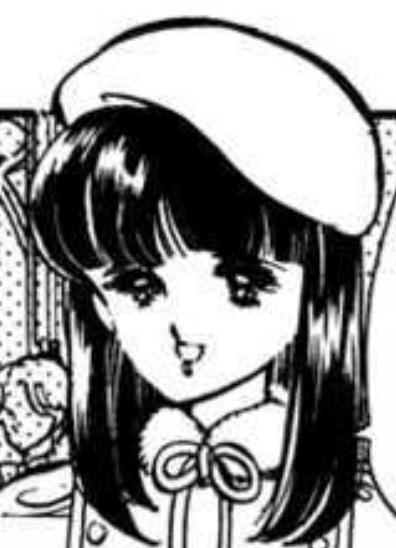

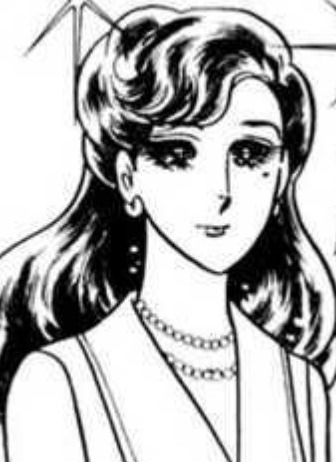
They are fragile, sweet and pretty, that’s for sure. They are either the daughters of an important family which aspires to marry them with the love interest, thus expand their power, or they are someone who because of some circumstances, grew closer to the love interest, before the main character even could or when she was separated from him for various reasons. Nevertheless, they are in a better social situation from the heroine. Their character arc usually begins at some crucial point of the plot, which is halfway through the story, when the main character and the love interest’s relationship have had already developed, but had not quite bloomed yet. They are considered to be innocent and kind, contradictory to the main character who is much more spontaneous, causing trouble to other sometimes. As expected, they slowly fall in love with the main love interest, in some cases before the main character even realises that she loves him. Either way, those characters add an extra dose of melodrama and constitute to the story, sometimes a little bit, some others a lot to a point of changing it.
Shiori from “Glass Mask” is an interesting case. She is a lady from a wealthy family, so she’s elegant and accomplished. She’s also very pretty, but fragile, as she suffers from anemia and many times she passes out. At first, she’s sympathetic, as she goes out with Masumi and starts falling for him, even though Masumi loves Maya. But as the story progresses, looking at the way Masumi talks to her (Maya), she starts to suspect that he likes her. Slowly but steadily, she evolves into a manipulative woman, who uses her weak health to keep him close. She sees Maya as a threat and she goes out of her way to make her seem like a bad person in front of Masumi. When he learns about all of this, he breaks up with her, but afterwards, Shiori attempts suicide and passes out. When she recovers, she loses almost all of her sense and she goes mad. She’s hospitalised in her room, where she barely speaks and sometimes she growls Maya’s name, rips apart her pictures in magazines and orders bouquets of purple roses to rip them too. At this point of the story, her parents don’t allow him to break their engagement, until their daughter recovers, leaving him responsible for her. In conclusion, Shiori evolves from a sympathetic woman, to a pathetic creature who’s adrift to its feelings.
Susanna from “Candy Candy” is a young talented actress, with a good heart, who works at the same theater company with Terry. During the time of their troupe’s performances in Chicago, she starts falling for him. Seeing that Terry’s heart is set on elsewhere she tries to keep him distant from Candy. Later on, in New York, during a rehearsal, the spotlight that was above of Terry, was ready to fall, so Susanna ran and pushed him away to save him, but the spotlight fell down before she could walk away from it. In the hospital, the troupe learns that she’s alive and healthy, but unfortunately the doctors were unable to save her legs and were forced to amputate them, meaning that her career as an actress was over. Terry took the responsibility, having a strong sense of duty and being pressured by Susanna’s mother. When Candy arrived to New York and see his play, she learned about it soon. Before she even fathom the news, she ran to catch up to Susanna, to save her from a balcony, before she could jump, trying to suicide, to free Terry and let him be with the one he loved. Candy manages to save her and decides to leave them be. So Terry chose to stay with Susanna to take care of her.
Lalissa from “Haikara-San Ga Toru” is a character that appears in the second half of the story. She’s a Russian noble, who arrived to Tokyo with her husband, who is in fact not her real one, but he’s Shinobu who suffers from amnesia after the war and believes that he’s married to her. Lalissa is elegant and quiet, but sad and the truth is that she had lost her real husband, that’s why she wants Shinobu near her, due to his resemblance to him. Benio, who’s Shinobu’s sweetheart, believing that he was dead, was shocked when she saw them together. But due to the circumstances and the fact that Lalissa suffers from tuberculosis, Benio decides to give up on him. But when the Kanto earthquake stroke, Lalissa was severely injured and ready to die, whereas Shinobu regained his memory and she told him to marry Benio and be happy.
Another mention, is Marie from “Alpen Rose” who liked Lundi and that was the reason that she miraculously stood up from her wheelchair to help him, although it’s clear that he likes Jeudi.
#retro shojo#shojo manga#Rose of Versailles#Candy Candy#Alpen Rose#Lady Georgie#Lady Lynn#Glass Mask#Swan#haikara san ga tooru#aim for the ace#character types#70s manga#80s manga
231 notes
·
View notes
Text
Female characters in retro shojo [70s edition, part 1]
Ah, the 1970s (and early 80s), where a majority of the shojo manga stories took place in a distant European country or in America, surrounding either orphan girls from the 19th or early 20th century, who remain cheerful and have adventures, trying to find out who they are, making friends and falling in love, or epic historical stories filled with war, scandals and larger than life characters. If the manga was taking place in Japan, the plot was somehow more down to earth -though most of the time it restrained the same amount of unrealism- and it was either about following the journey of a girl who pursues the career of her dreams and evolves into a notable person, or a high school story filled either with melodrama and angst or a more heartwarming romantic comedy. But in this two-part article I won’t talk about plot tropes of the shojo manga of that era -as this topic deserves an exclusive article-, but about the female characters (I will dedicate an article on male characters some other time). Those characters are very important, as they set the standards of today’s manga and anime. But it should be noted that back then the formula of their design and characteristics are different from today’s. Those are the categories that I’ve noticed, regarding the appearance and personality.
The “average” protagonists



They are the most common category. Usually, they come from middle class and they are presented either as cheerful and a little dense schoolgirls, or plain looking and unrefined, as oppose to their antagonists or rivals who are well educated, beautiful and more talented, but this may serve as a determination for them to improve. Other times they are presented as headstrong heroines, ahead of their time, who refuse to compromise and for this they are a pain to their old-fashion society. Either way, they are kind, good, well-intentioned and want to help the others, that’s why they make friends easily. The thing that really works with these characters and makes them much more interesting than they may seem, is that they are independent and built their future on their own and they never give up, no matter what happens and what someone might say about them. Even when they are not sure of themselves, they always keep trying, until they reach to their dream. They use their obstacles as strength and determination to go on, proving that they are not average at all.
Maya, the protagonist of “Glass Mask” is a great example of this. She starts as a good-for-nothing daughter of a poor family, who isn’t particularly accomplished, but has a hidden passion for acting which she hadn’t realise it herself at that point. But when she is discovered by Tsukigake, a former legendary actress, she realises how much she wants to be an actress to a point that she lied saying that her mother allowed her to study to sensei’s acting school and ran away from home. Not even when her mother told her that she doesn’t consider her as her daughter anymore, she didn’t gave up, in spite of being very hurt by this. Her path towards acting wasn’t easy. Many times she has to face many who say that she doesn’t belong to that industry, or who are jealous of her talent and means her harm, but with her faith in herself, she always overcomes those obstacles. An admirable thing about her is that she dislikes fame, being shy, as she just wants to act and that she does not gives up, no matter what and even when she does, she quickly stands up. The most interesting dynamic of the story is her worthy rivalry with Ayumi, that is clearly a case of the trope “technician vs performer”, with Maya as the performer, as her standard method to learn how to play a character is to become that character. As the story progresses, Maya evolves from a girl with a hidden talent, to a young actress who portraits an original take to classic characters, but who still had much to learn, to one of the greatest actresses of her generation.
In “Yokohama Monogatari”, Uno starts as a plain, poor, orphan girl, who is ignorant about the world, as she hasn’t even seen the sea before and she believed that westerners were vampires who could drink people’s blood, that’s why they had blonde hair and blue eyes. She starts to work as a companion in a rich family to their daughter Mariko, who is the same age as her. Besides their differences, they become quickly best friends. While Mariko is a little spoiled, Uno, despite of her ignorance of world, can be more considerate and responsible in some matters. She also has a lust for learning and soon her and Mariko pursuade her family to go to school. There, she meets many people, among them there are a few foreigners too, she makes a lot of friends, and she excels at all of her studies, being hardworking. As the years passed by, Japan changes and allows exchange of ideas from many cultures -it’s Meiji era we are taking about, that means the last quarter of the 19th century- and Uno evolves from a poor, -many would say- hopeless for her situation, clueless of the world girl, to an open minded, educated and refined woman, surrounded by many people she loves.
In “Tokimeki Tonight”, Ranze -well except of being the daughter of Dracula and warewolf and having her own vampire powers as well- is an average girl who is friendly, sweet and little quirky girl who goes to school and falls in love with Shuun. Some may say that she is pretty basic, but in fact, she knows her self worth well, so even when her parents were disappointed with her not having any power yet, at the beginning of the story, she wasn’t particularly bothered by it. Also she is very headstrong that she falls in love with a human boy, while she knows well that a creature from the demon world and a human cannot be together. But in spite of all of that, she decides to stay true to her own feelings and even though she’s not so sure about Shuun’s feelings for her either, she doesn’t give up and waits for him, because she hopes and deep down knows that he likes her too and she is right. And even when her parents want her to marry prince Aaron of the demon world and even the king- learn that she likes a human, in spite of that being against the rules, she isn’t afraid to stand up for her beliefs. Later though, we learn that Shuun is the lost prince of the demon world, so he is not a human after all, but that’s another story.
In “Aim For The Ace”, Hiromi is a typical schoolgirl who struggles to get better in tennis, when she gets selected as one of the club’s main players in school by the new coach, as he saw potential in her. Some of her seniors are jealous of her because of that and at first she thinks that she is not worth such a discrimination, but soon she improves and realises how much she loves tennis. There’s also a very similar rivalry dynamic with “glass mask” between Hiromi and Reika who grow to be worthy opponents.
In “Haikara San Ga Toru”, Benio is a headstrong young woman who studies Kendo, drinks sake and prefers reading literature and feminist ideas, rather than being interested in housework. She also likes to dress in western clothes, rather than the traditional kimono and strongly believes that women should have the right to decide for their future on their own and they should marry for love. But her world turns upside down when her father announces that he has arranged a marriage for her. The one that he indends for her is someone she knew before, very briefly and accidentally, a lieutenant named Shinobu. Of course, she refuses, being loyal to her ideals and she goes out of her way to avoid him, just to satisfy her pride, in spite of actually starting developing feelings for him. When she moves to his grandparents’ house to get prepared as his wife, she purposely fails in all of her duties as a housewife and constantly argues with his grandparents, but all of that only makes Shinobu fall for her even more. It’s only when he leaves to go to the war, when she realises her feelings for him and during at that time when everyone thought that he was dead, she matured and became even stronger, remaining loyal to him and determined to work as a journalist to support his family, but also tracking him down, hoping that he’s still alive. Of course, at the very end, they live happily ever after together. Benio’s character development is admirable; starting as a clever, but headstrong girl, to an independent and wise woman, proving that you don’t have to disagree with everyone in order to prove that you are the one who chooses how to live your own life.
The villains

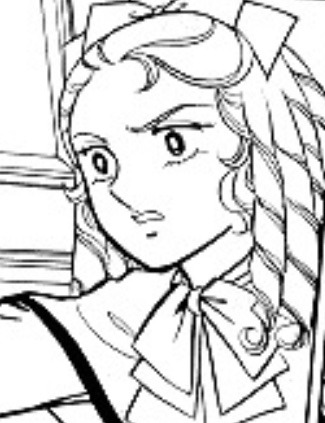
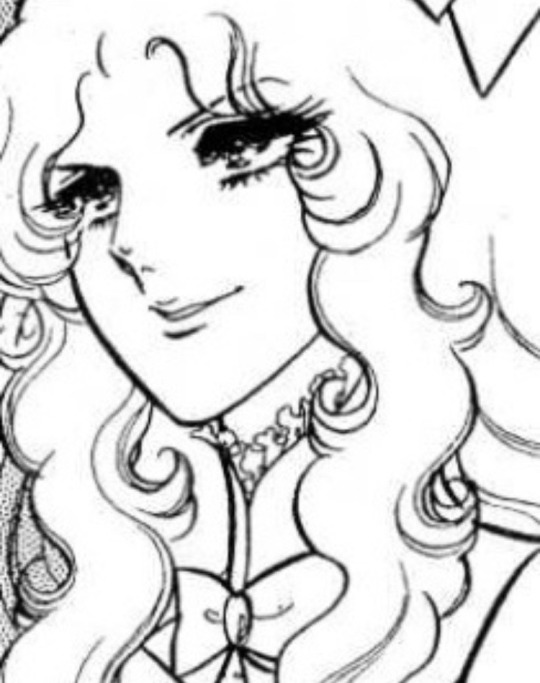
Their extreme pride and vain is their common nature. Most of the times they come from a wealthy family, so they are either oujo-sans who are always dressed elegantly, are seemingly refined and they tend to have curly, blonde hair -as blonde hair seem to be associated with wealth and sophistication in Japan-, or they are just spoiled brats that demand that everyone will do as they say. They are the main antagonist of the story for different reasons. The most common one is that they are jealous of the heroine, either because they are their love rivals and they are jealous of the heroine’s relationship with the love interest of the story, or because they are just pathologically jealous of the heroine because of her looks, her happiness, her luck and her loving nature. Another reason they act the way they do is because they want power and success, or they just want to secure all of that. The worse and least complex reason of all is that they are just mean for no particular reason.
Eliza, from “Candy Candy” is the typical alpha b*tch who is pathologically jealous of Candy. At first, she along with her brother, makes her life miserable, by blaming her for the bad things they do, such as hurting the horses in the stables, provoking her and then telling to their mother that she’s wild and leaving her alone in a town she doesn’t know and locking her in dark rooms. After that, during their time in London, Eliza says to everyone that Candy is an orphan who made her life miserable, even blaming her for Antony’s death. Later, having the habit of falling in love with the one that Candy likes too, school, she falls for Terry and constantly tries to turn him against her, failing miserably. She also writes a fake letter to her that it was supposedly from Terry and to Terry too, to meet each other in the stables at night and with this, she blabs them to the teachers and Candy, having no choice, leaves school. Later, when Candy was pursuing a career as a nurse, she continues her cruel ways and her mother also threats the director of the hospital where she was working, that if they won’t fire her, the Leagan family will withdraw their funds for the hospital and she also made sure that no hospital from Chicago will hire her, leaving Candy in a difficult situation. Those are only of few of the things that Leagan family did to Candy. The worst part is that they don’t pay for what they did at the end.
Fukiko from “Oniisama e” fits well this image; She is a refined lady from a rich family, the president of the sorority and very educated, that’s why she is admired by everyone. However, in reality she is manipulative, proud and very possessive. She wants to control everyone and she’s even willing to go out of her way to achieve what she wants. For instanse, she’s jealous of Nanako because she is close to Henmi Takehito, the one that she (Fukiko) is in love with, so to control her, she chooses her to be a member of the sorority and demands that she will stay away from him, even by pulling her into the lake and attempt to drown her . She also makes Rei’s life miserable, by stepping into her weakness, refuse to accept her as a member of their family and constantly manipulating her with the cruelest of ways. Also, it’s revealed that her friends from the sorority are feeling pressured because of her. Later, with the death of Rei, along with her realisation that Henmi and Kaoru No Kimi are truly in love, surprisingly, she regrets, gives up on her cruel ways and matures, growing even more beautiful for all of that.
Yoko from “Tokimeki Tonight” is a different case. She is the love rival of the story and the have loved Shuun ever since they were little. Being the only daughter of a rich businessman, she is spoiled and when something doesn’t go as she wants, she is is angry and demands that everything will go the way she wants. She envies Ranze for her close relationship with Makabe and ever since she accidentally saw her transforming, she tried desperately to prove others that she (Ranze) is a vampire. Her character is less dramatic and more comedic, as she is often grumpy and clumsy. But she isn’t really a bad person and she doesn’t really cause an awful lot of trouble.
In “The Rose of Versailles”, Madam Du Barry, the king’s mistress, wants to sustain her place in the court and demands that Marie Antoinette, who was at that time the dauphine, will speak to her. She also have tried to poison one of the court ladies. Countess De polignag becomes the queen’s best friend, for her own benefits and manipulates her without her (Marie Antoinette) knowing, like telling her to lie about being pregnant and also persuade her to start gambling in the court, which was illegal. She’s also Rosalie’s biological mother and accidentally kills the woman which raised her daughter and she’s the reason that her other daughter suicides, because she cannot handle the marriage the she arranged for her. Besides of her daughter’s death, she doesn’t seem to regret for any of her actions as she tries to make Rosalie merry the same man. Luckily Rosalie escapes. Also, she tried to sabotage Oscar many times and all this was just for the sake of power and money.
In “Glass Mask”, Norie Otobe, befriends Maya and she is supposedly her assistant, but in reality she just waits for the right moment to strike and steal Maya’s role and career. Unfortunately, she succeeds and it costs a lot for Maya, for a while. Luckily Ayumi discovers this and punishes her with the best way ever.
The tomboys


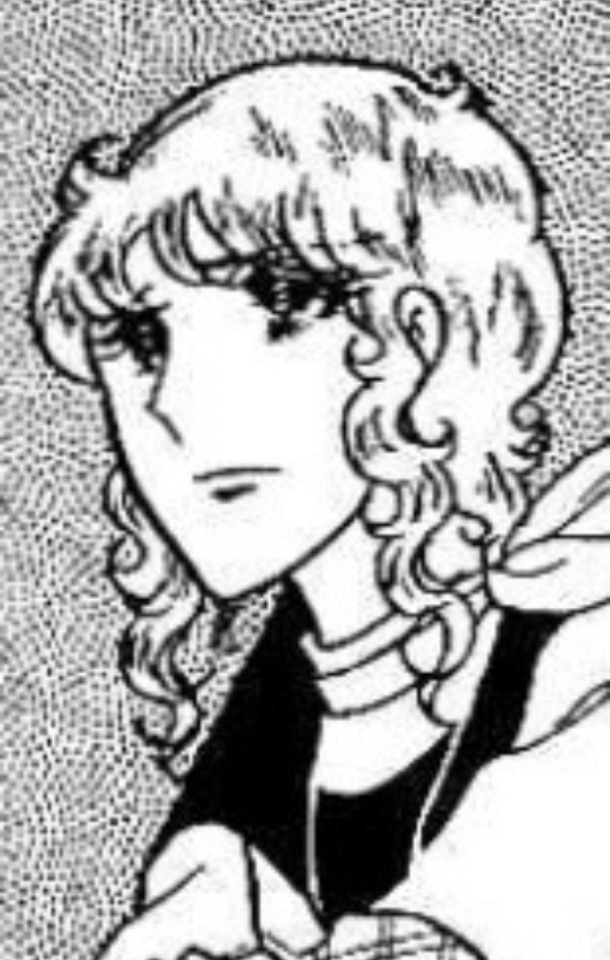
They are either mysterious, or lively, but one thing is for sure; they are dressed in clothes that are considered to be “manly”, they are handsome and they are constantly mistaken for a boy. They are also very elegant and educated and their image is that of a prince. That’s why they are admired by both women and men. Some may say that even though they are trying to be like a man, they are still weak, but they point out that just because they dress more “tomboyish”, doesn’t mean that it makes them less of a woman. After all, when they want to, they can transform into the most feminine girl of all. They also prove that their sexuality is not associated with their looks, as a “masculine” girl has the same possibilities of being heterosexual or homosexual, with a more “feminine” one. So, they break all the stereotypes regarding women. Many times, they are portrayed as headstrong heroines who stand up for their beliefs and their friends.
The most famous character that supports this image is Oscar from “the Rose of Versailles”. Oscar is one of the daughters of the Jerjeyes household. Not having any son, her father decided to raise her as a boy so that one day she will succeed him. Oscar dresses in boys’ clothes and learns activities like fencing and archery. When she was fourteen, she was tasked to serve as Marie Antoinette’s bodyguard. The manga often pointed out how different those two were regarding appearance and character, even if they were in the same age. Oscar has a strong sense of justice and she always protects the weak and is not afraid to challenge someone that she believes that isn’t right. Of course, she is admired by men and women alike and she is also a great and loyal friend. At one point she falls in love with Fersen, who loves Marie Antoinette. But because of her respect for the queen and her love of Fersen, she helps them, despite being heartbroken. At the end, she realises that she loves her childhood friend, Andre. She loves medieval combat, drinking heavy drinks, talking about politics and playing violin. Many pointed out that being a woman she was weaker but she always proved them wrong, pointing out that women can do anything and that it doesn’t matter if you are a man or a woman, only how skilful you are. She was hiding her femininity not because she wanted to be a man, but because that if she acted like a woman, the society might think that she was weak and she wouldn’t be able to have the access and the freedom to do what women normally wouldn’t do back then, because women were alowed to limited things. In the early 1970s, by the time this manga was ongoing, the second wave of feminism had already started and women started fighting for equal legal and social rights, so Oscar’s character was influenced by all this.
Rei from “Oniisama e”, is admired by her fellow classmates and is also called “saint Juste”, named after one of the leaders from French Revolution, due to her physical resemblance to him. She is very charismatic, excelling to sports, piano, guitar and theatre, she is very elegant and dresses often in a black suit. Unfortunately she is drug-addict, she smokes and can be suicidal, carrying always pills and a sharp object with her. She is also obsessed with Fukiko, the sorority’s president, for many reasons, causing her to be controlled and abused by her. She also lives alone in a depressing house filled with mirrors and this also causes to be depressed. Her best friend is Kaoru no Kimi, who’s also a tomboy, but they are entirely different and she befriends Nanako and her friends. In the end she suicides, taking too many sleeping pills, having everyone, especially Nanako, left devastated.
Also from “Oniisama e”, Kaoru, is a tomboy who is strong and energetic. She is athletic and excels at basketball, but she is also very cool and doesn’t seem to care that she is the best at something that she’s doing, that’s why she is admired by her fellow classmates who gave her the nickname “Kaoru no Kimi”, from a Japanese classical novel; “the tale of Genji”. She also has a great sense of justice, as when she sees classmates being bullied, she defends them and put the bullies on their place. She is also very loyal and supportive and cares deeply about her friends, helping them when they are in need, especially her best friend, Rei, for whom she is very concerned. But in spite of her energetic appearance, she suffers from breast cancer and tries to keep it a secret, pretending that she is healthy and that everything is under control. But in fact, she pushes away her beloved, Henmi Takehito, concealing her true feelings, in order for him to be happy without her and not suffer anymore, showing how selfless she is and how much she loves him to a point of sacrificing her own feelings. At the end, it pays off and they end up together, living happily.
Another honourable mention is Rei, from “Glass Mask”. Rei is the older student of Tsukikage sensei’s company and one of Maya’s best friends. She is a tomboy who wears those characteristic 70s jeans and for some reason is mistaken by a boy -much to her dislike-, despite of being obvious that she is a girl. Being an actress, she can transform into a beautiful princess in no time, but she also portraits very well a prince. In the first volumes, she portrayed Jo, from “little women” which was a role very suited for her. As a sister figure for Maya, she is loyal, friendly and the responsible one who helps the theatre company stay organised and is a very strict teacher to Maya, helping her because she knows her potential. Also from “Glass Mask”, Keiko from the “Ikkakuju group” is also mistaken as boy, but she can transform into a pretty princess in no time.
Note: At the first half of the 20th century “Little Women” were very popular in Japan, particularly Jo, who was tomboyish and outspoken and her character had inspired the first female mangakas of the 60s for their stories and characters.
#retro shojo#shojo manga#70s manga#80s manga#glass mask#Tokimeki tonight#haikara san ga tooru#Oniisama e#the Rose of Versailles#Candy Candy#Yokohama monogatari#aim for the ace#character types#Shojo
231 notes
·
View notes
Text

Sailor Moon, 1991, by Naoko Takeuchi.
This is from “the lover of princess Kaguya”, one of the Sailor Moon short stories. The protagonist is Luna, who falls in love with a scientist, who is in love with another woman, having an unrequaired love for the first time. So Sailor Moon turns her into a human so that she could confess to him. After that, she realises that the one that she truly belongs with is Artemis. This story was made into a SM movie as well, named; “heart in ice”. (The events are supposed to take place after the infinity arc/S and before the dream arc/Super S) It features the inner and outer senshis and it’s filled with snow...perfect for a winter snowy night.
28 notes
·
View notes
Text

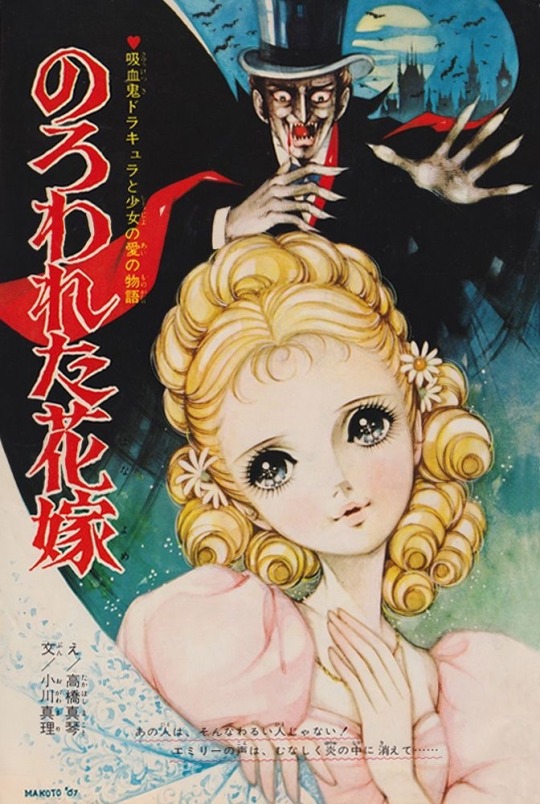

Some beautiful covers from late 60s early 70s horror shojo manga. Art by Akatsuki Tadashi, Macoto Takahashi and Saga Miyuki (from right to left).
2K notes
·
View notes
Text

Tokimeki Tonight, 1983, Koi Ikeno.
It’s 31 of October, so in honour of this Halloween, here is the most classic horror-romantic comedy manga. It’s about Ranze, a vampire with the ability to transform into anyone or anything she bites. Her family is from the demon world, her father is Dracula, her mother is a werewolf and her little brother is soon to be a vampire. Ranze wants to maintain her life as a normal teenage girl, with who she really is. In school, she falls in love with Shun Makabe, a young man, but the demon world has its own rules and one of those is that demons and humans cannot be together. On top of that there’s a girl named Yoko who likes Shun too and Aaron, the prince of the demon world who likes her. Will she be able to handle everything and be with her beloved?
It’s a fan and creative story that is certainly entertaining.
32 notes
·
View notes
Text

Handsome Girl, 1988, Wataru Yoshizumi.
This story is about an girl named Mio, who’s a schoolgirl and an actress. One day she meets a guy name Ichiya who’s a genius director. At first she doesn’t like him because he said that she’s not a serious actress, but eventually they learn more about each other.
Wataru Yoshizumi is as always a great mangaka, using simple yet beautiful, clear art that doesn’t tire the eye, but is on contrary, pleasant, restful and easy to follow.
29 notes
·
View notes
Text

Kanata Kara, 1993, Kyoko Hikawa.
This famous manga is about an ordinary girl named Noriko who slips into a magical world and follows her epic adventures with a warrior named Izark.
56 notes
·
View notes
Text
Some Retro Shojo Couples That Ended Up With Someone Else But Should’ve Ended Up Together Instead
•Jeudi/Alicia and Leonard (Alpen Rose)

In Alpen Rose, Jeudi searches for her parent’s whereabouts from Switzerland to France. Along her journey she makes many friends who help her. The one who helps her the most is Leonard Aschenbach, a famous genius musician who in fact was a family friend and knew her when they were little, before her amnesia. Their first encounter is interesting. Jeudi looks for a musician named “Aschenbach” and finding his adress, she break into his house, without him knowing. There she sees a young man who’s angry and ready to shot her she asks to see Mr. Aschenbach but he claims that he’s dead. After that, she immediately realises that he’s in fact him and that he was hiding his music from the Nazis. After saving her from the a French nobleman, they become friends. It’s true that Lundi is her sweetheart and he’s worth it too, but both in anime and in manga Jeudi passes the majority of the story with Leonard, having many adventures and helping other people too, so you get more attached with the idea of their ending up together. Also, it’s clearly that he’s in love with her and there are some hints that she likes him too. Their chemistry and their simultaneity is undeniable. Too bad that they missed out their chance.
•Usagi and Seiya (Sailor Moon)

In “Stars”, the fifth and the final arc of Sailor Moon, Mamoru goes to America for one year to study. Usagi feels very lonely that her future husband is away, but as the first year of high school starts, things are going to change, as popular idol band of three musicians called “Starlights” transferred in their school. The girls are all excited of getting to know them, but Usagi doesn’t pay them much attention. That’s until she accidentally meets with Seiya, the leader of the band and her first Impression is certainly negative, as she finds him annoying, while he fell in love before they even meet properly. Eventually they grow closer and their chemistry is (also) undeniable. He understands her feelings (or tries to) and she likes him very much too, but she already has a boyfriend, so she can’t do anything. Later it’s revealed that Starlights are Sailor Senshis and in fact...women, at least in the manga. In the anime they are guys in their human forms and become women only in their Sailor Senshi forms. At the end Usagi ends up of course with her soulmate Mamoru. The problem is that in the anime, after the two first seasons, Usagi and Mamoru’s relationship becomes boring, as nothing much happens and it feels that Mamoru is insignificant and feels as if it’s his duty to love Usagi, while Usagi is an annoying girlfriend who constantly gets jealous. With Seiya, their relationship is much more interesting because he tries to bring the best out of her and they have much more things in common because they are in the same age. If things were different and everyone were normal teenagers, it could have worked out.
•Oscar and Fersen (The Rose of Versailles)
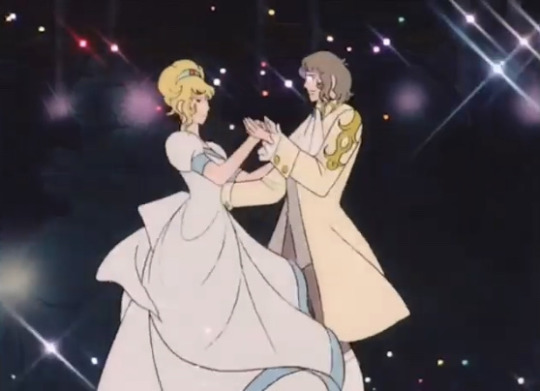
Just from where to start with these two? Oscar is the youngest daughter of the Jerjeyes family and is raised as a man, to be the commander of the Royal Guard. Fersen is the son a very important noble family from Sweden. Their first encounter was in a masquerade ball where Marie Antoinette went and Oscar had to followed her, as she was responsible for her safety. Fersen and Marie Antoinette met in a balcony and he took off her mask to see her face. Seeing this, Oscar became furious and she demanded his name and state, revealing that the one that he was talking to was the young dauphine, soon to be the queen of France. He was shocked. After a little while he visited Versailles chateau to meet Marie Antoinette and after an accident with a horse, causing the king to nearly kill Oscar and Andre, Fersen took the responsibility and demanded that if Oscar was to killed, he was to be killed too. Oscar admired his sense of justice. Later that day, he visited wounded Oscar and that was when he learned that she was in a fact a woman. After that he deeply admired her courage and stating that she is braver than most of men. Oscar and Fersen became good friends and shared many interests and opinions on many subjects. It didn’t take long for Oscar to realise that she was in love with him, just in time he had left for the American Revolution. After some years he returned and continued hanging out with Oscar, but he was in love with Marrie Antoinette. Oscar, being a good friend with both of them, agreed to help them contact each other, but as her love for Fersen grew more and more, so did her sorrow that her love was unrequited. There was even a ball, where she decided that she was going to attend it as a woman, being more beautiful than ever with a gorgeous dress and haircut. As soon as Fersen saw her, he so very charmed by her, that he forgot about Marie Antoinette and asked to dance with her. As they danced, he asked her where she was from and told her that she reminded him of a friend of him named Oscar, who dresses as a man, but she is in fact a beautiful woman. Oscar leaves the ball determined that she was ready to give him up. Later, Fersen realises Oscar’s feelings for him and said that his heart was aldready set on Marie Antoinette. After that, they rarely saw each other. It’s such a shame because they could’ve been a handsome and sensible couple of two great families. In the manga even Fersen’s sister Sofia stated that he could’ve been truly happy with Oscar and knew well that she had feelings for him. Eventually Oscar endes up with her childhood friend Andre. The problem is that, while in the manga they were romantic and persuasive as a couple, in the anime it seemed forced and compromised from Oscar’s perspective; as if the one she loved didn’t loved her back, so that was why she gave up and decided to stay with someone who loved her.
•Meiko and Satoshi (Marmalade Boy)

I know that repeating the same words is tiring, but I truly mean what I’m saying; Marmalade Boy is a great example of having many many supporting characters that are all very interesting and that their stories evolve in parallel with the main characters’. Meiko is Miki’s best friend, who’s mysterious and refined, while Satoshi is Yuu’s best friend who’s the president of the student council and a charmer. Meiko had an affair with Namora, a young teacher and believed that Satoshi like guys in her age are immature. After the scandal reveal of the romantic relationship between a student and a teacher, Namora quits his job and moves to Hiroshima. Meiko is very sad, believing that Namora is her soulmate. Satoshi has a crush on her that grows more and more and he constantly decides to win her over, first by flirting with her with hilarious ways. At some point, he pretended that he cut his hair because she said that he doesn’t like long hair in men. As the time went by he realises that she’s not buying anything he says, as she dislikes his playboy attitude, so he decided to let her show that he’s serious about her. Seeing that she enjoys reading, she encourages her to start writing and by trying to pursuade her to take place in a writing competition, she realises that she wants to become a writer. He even publish her story without her knowing because he had such a great faith in her that she was going to win and he was right. What’s more he always was there for her and he always made her laugh and bought out the best of her. And every time that she was sad or in trouble, he was the first person that she thought. Not to mention that they look great together. “The elegant and mysterious Meiko who teaches him to be more considerate” and “the happy go lucky and charmer Satoshi that teaches her to be more relaxed and open”. She just was more happy and at peace than ever. Eventually Namora contacted with Meiko again and Meiko went all the way to Hiroshima to make up with him. Satoshi chased after her and fought till the end, but Meiko chose Namora. Satoshi finally gave up because he loved her so and wanted for her to be happy. Meiko and Namora got married as soon as Meiko graduated from school and instead of going to college, she became a working young wife, who did some writing. Her character is such a wasted potential because she was very pretty, smart and refined. Satoshi helped her evolve as a person and was there for her, when Namora wasn’t. Had she ended up with Satoshi, she would have lead a much more wealthier life, she would have acted more her age, she would have studied more and generally she would’ve been happier.
#retro shojo#shojo manga#Alpen Rose#Sailor Moon#the rose of versailles#marmalade boy#Shōjo#anime ships
78 notes
·
View notes
Text

Poe No Ichizuku, 1972, Moto Hagio.
To celebrate the start of the spooky season, this is the “Poe clan”, a classical gothic horror manga that follows the story of a vampire family from 18th century, untill early 20th, dealing with death and life. It’s Moto Hagio, -one of the mothers of Shojo- we are talking about, so it’s guaranteed that her storytelling, art and characters are very well polished.
162 notes
·
View notes
Text

Alpen Rose, by Michiyo Akaishi, 1983.
This story is about an amnesiac girl named Jeudi, who was found by a boy named Lundi, in a village in Switzerland, in the late 1930s. Together they try to find Jeudi’s parents and will face many obstacles in their journey. They have a strong enemy, a Nazi French count who is after them, but they also make many friends, such as reporters, young couples and a genius musician called Leonard Aschenbach. It’s a great story that has love, loss, friendship, in the countries that are surrounded by Alps, just before World War Two breaks out.
[This is art from the manga and these clothes have nothing to do with the story. It‘s just so pretty that I had to choose it.]
49 notes
·
View notes
Text

Tenshi Nanka Ja Nai, by Ai Yazawa, 1994.
This manga tells the story of a high school girl named Midori who goes in a new established school and is persuaded by her classmates to run for the student couscil. One day she sees a handsome guy who takes care of a kitten and she immediately falls in love with him. A little bit later she finds out that he’s one of the student council members too and together they are going to work hard to make sure that everyone in their school is happy.
38 notes
·
View notes
Text
Top 10 Retro Shojo Couples
10)Sana and Akito (Kodocha)
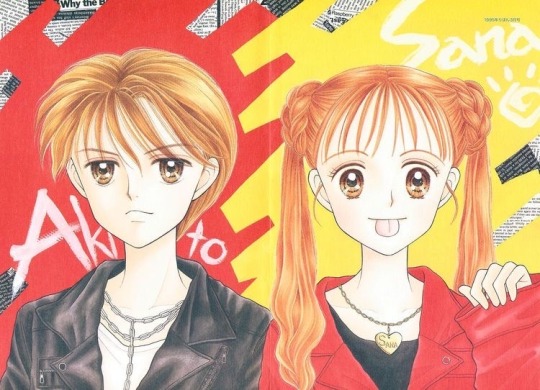
Sana Kurata, a cheerful child actor star with her own show, goes to a normal school and tries to study and have fun with her friends, but a troublemaker boy, named Akito Hayama turns the class upside down, so now she will do anything to protect her classmates from his mischievous ways. But as the time goes by they learn more about each other and they end up being friends. Will their friendship evolve into love?
9)Benio and Shinobu (Haikara San Ga Toru)

Benio Hanazawa is a fashionable, headstrong girl who enjoys martial arts, reads literature, drinks alcohol and strongly supports women’s rights, saying that she will marry the one that she will choose and she will lead her own life. But her world turns upside down when her father announces her that she is to marry a half German lieutenant named Shinobu Ijuin. In keeping with her feminist ideas, she immediately refuses. Later she lives as a fiancé in Ijuin household and learns how to be a housewife, but she tries to bring out her worse self to make him and his family want to get rid of her, failing miserably as Shinobu loved her from the start. Later he leaves to fight in Manchuria and that’s when she realises how much she loves him. Thus an epic love story filled with obstacles begins. Will they finally get together?
8)Ranze and Makabe (Tokimeki Tonight)
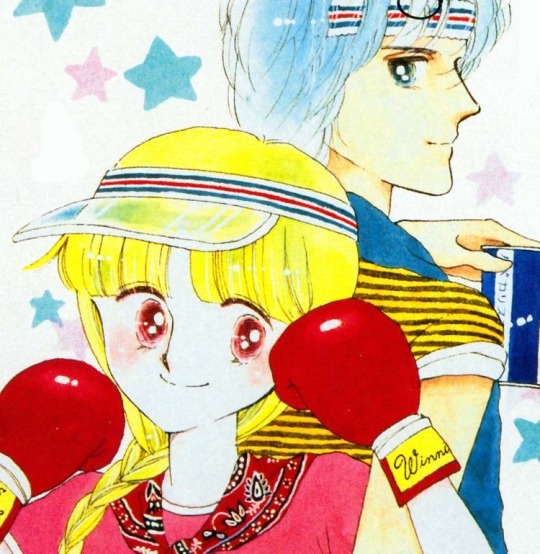
Ranze Eto seems like a normal teenage girl with a typical family, but the truth is that she and her family come from tha demon world. Her father is Dracula, her mother is a warewolf, her little brother is soon to be a vampire and she herself discovers that she is a vampire that when biting another person, animal or anything else transforms into him or it. So she uses her powers for her own benefit. Living as a human in human world, she falls in love with Shun Makabe, a guy from her school that is a boxer. She struggles with keeping her true nature a secret, has love rivals and hopes that Shun has feelings for her too, knowing that it is forbidden for a monster and a human to be together. What will happen when he will learn about her nature?
7)Haruka and Michiru (Sailor Moon)

These two are one of the most beloved characters of Sailor Moon. They both make the first appearance in the third arc of the story. Haruka aka Sailor Uranus is an androgynous girl who loves sports, driving and occasionally plays the piano and has a flirty nature. Michiru is a very elegant, rather mysterious lady who aspires to be a famous violinist. In the original anime, Uranus wanted to run from her destiny as a sailor Senshi because she was afraid. They both consider each other as allies, but they made a deal that they are not going to get attached to one another and even if one dies, the other will just continue her work. But after a moment of crisis, they realised how much they love each other. In the manga they were a couple from the beginning. These two prove that they are very loyal to each other and that they will follow each other everywhere.
6)Miki and Yuu (Marmalade boy)
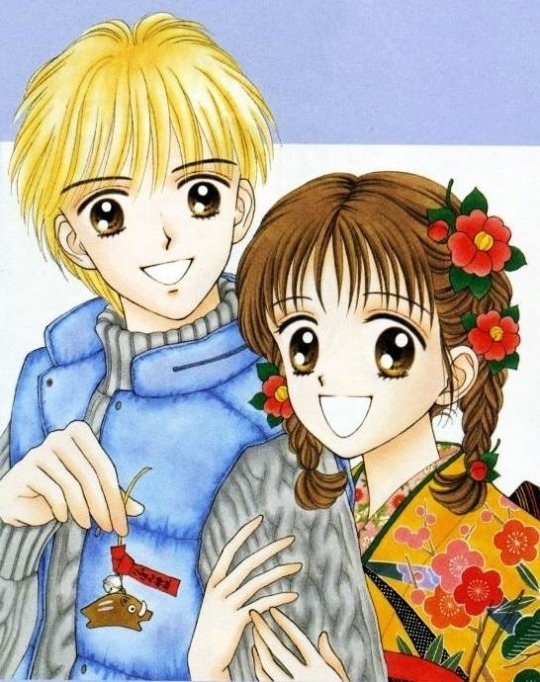
Miki Koishikawa is a high school girl who just wants to keep living a normal, calm life. But her world turns upside down when her parents announce her that they are breaking up and that they are going to switch partners with a couple that they met in Hawaii. What’s more, they decide to live all together in a bigger house with Miki and the other couple’s son too, a guy in the same age as her, named Yuu Matsura. At first Miki is annoyed by him and cannot understand how can he be so calm with their families’ bizzare situation. Sometimes he is sweet, some others he is a big teaser and that’s why Miki calls him marmalade boy, bittersweet just like marmalade. As they spend more time together they fall in love, but their relationship faces a never ending series of love triangles and many other obstacles. Are they going to be happy in the very end?
5)Tsukushi and Tsukasa (Boys Over Flowers)

Tsukushi Makino is a middle class girl that wins a scholarship to Eitoku academy, a prestigious school in Japan, with students whose parents are from the Japan elite. At first she keeps a low profile and wants to concentrate to her studies and graduate quickly and calmly. But she encounters F4 (flower four), a clique of the four sons of the most important families in Japan, who are constantly bullying anyone who gets in their way. As she cannot tolerate injustice, she stands up for her friends and for herself and declares a war to F4’s leader, Tsukasa Domioji. He falls immediately in love with her as she is the first girl that oppose to him, but being the rich spoiled guy that he is, seeing that money are not captivating her, he constantly tries to make her life difficult. But as Tsukushi learns more about the elite and Tsukasa’s family and himself, she realises that he is not a tough as he seems. Likewise, Tsukasa learns to respect others and love truly. After a long story of back and forth, will they end up together in the very end?
4)Candy and Terry (Candy Candy)
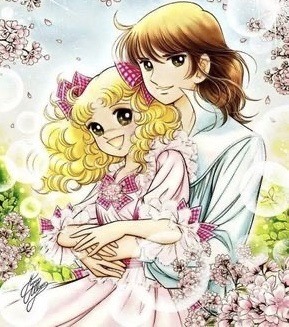
Candy White is an orphan girl, who’s very cheerful and optimistic and constantly faces many obstacles that she eventually overcomes. After being separated with her best friend, being adopted by the Leagan’s, living as a servant, being sent to Mexico, being rescued and then adopted by the mysterious head of the Ardley family and living with them, and after her first love Antony was killed unexpectedly by falling from a horse, she and her two friends from the Ardley family are sent to London to study at st Paul’s, a prestigious school. There she meets Terence Grandchester, the son of an important duke. She is immediately is annoyed by him, as he calls her “freckled Tarzan” and believes that he is just a mischievous, rebel without a cause who doesn’t care about anything. But as time goes by, they learn more about each other’s past and they fall deeply in love, only to be constantly separated, choosing different paths in life and facing tragedies that cannot be ignored. Will they find happiness and when will they return to each other?
3)Miaka and Tamahome (Fushigi Yuugi)

Miaka Yuki is an ordinary girl from the late 20th century, who enjoys eating, going out with friends and studies for the high school entrance exams along with her best friend, Yui. But their lives change forever when by reading a mysterious book from the library, they travel back in time, in ancient China. There they meet a guy named Tamahome, but Yui travels almost immediately back in the modern world, whereas Miaka stays and learns that she is the Priestess of Suzaku. Now she is destined to gather the seven warriors of Suzaku in order to summon Suzaku and then return to her own world. But as the time goes by, she and Tamahome fall deeply in love and they have to face many obstacles such as completing their journey, deciding what world is best for Miaka and on top of that dealing with Yui, who being transported in the ancient China again, she becomes their enemy and falls in love with Tamahome. Is their love strong enough to last?
2)Oscar and Andre (The Rose Of Versailles)

Oscar Francois de Jarjayes is the youngest daughter of the Jarjayes family. Despaired Over never getting a son, her father decides to raise her a man, by dressing her in man’s clothings and teach her martial arts. She often practices with her companion Andre Grandier, the grandson of her Nanny who had feelings for her since they were very little. She becomes the commander of the royal guard and responsible for the safety of Marie Antoinette. Oscar falls in love with Axel Von Fersen, a Sweden count who doesn’t have mutual feelings as he loves Marie Antoinette. Oscar on the other hand only considers Andre as a good friend whereas Andre’s feelings for her grow stronger. As the years go by, Oscar is more and more disappointed by the political situation of the country. Eventually she realises that she loves Andre too but the French revolution breaks in and both deciding to fight with the people against the king and the nobles, they don’t have time to finally live their love. Will they finally manage to servive the revolution and be happy?
1)Sailor Moon and Tuxedo mask (Sailor Moon
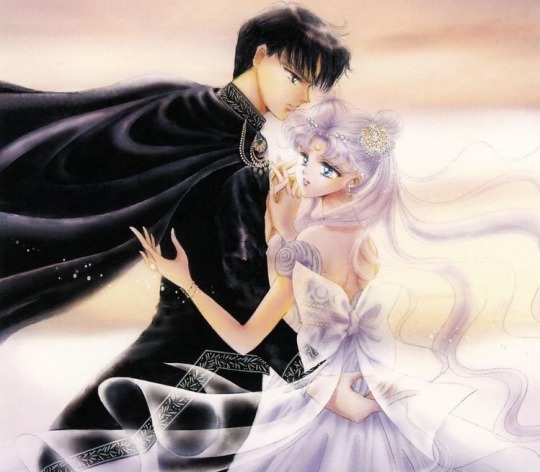
The number one could not go to anyone else but the queen and king of the shojo genre, Sailor Moon and Tuxedo Mask. They started off as enemies; Usagi Tsukino a cheerful, clumsy and a little bit of a crybaby who doesn’t like studying and prefers eating and Mamoru Chiba who was always one of the most refined students. As they bump into each other, they constantly argue and tease one another. But the truth is that Usagi is Sailor Moon and Mamoru is Tuxedo Mask and that they help each other fighting evil without knowing each the other’s true identity. Usagi is in love with Tuxedo Mask but dislikes Mamoru at first, but then, spending more time together, they started having feelings for each other. Mamoru on the other hand, suffering from amnesia after a car crash when he was little, searches for the legendary silver crystal, because a woman in his dreams begs him to find it and he believes that it’s the one thing that will make him remember his past. Usagi with the her friends, the other Sailor Senshis search for the legendary silver crystal too, as it’s going to reveal who’s the moon princess. Eventually they all learn about their past lives and the truth; Usagi was the princess of the moon, Serenity and Mamoru the prince of earth, Endymion and they fell in love, but a war between moon and earth started and not bearing the fact that Endymion was killed, Serenity took her own life. After many years everyone was reborn in the modern world. Usagi and Mamoru will overcome evil and prove that even if they die and they reborn, they will meet and fall in love again and again. Their story has just began.
#retro shojo#shojo manga#sailor moon#fushigi yuugi#the rose of versailles#tokimeki tonight#haikara san ga tooru#kodocha#candy candy#marmalade boy#boys over flowers#shojo
233 notes
·
View notes
Text

Banana Bread No Pudding, 1977, by Yumiko Ooshima.
This 24 year group manga tells the story of a girl with a mental illness, whose sister is getting married and now she can’t do simple things without her help, such as waking up in the middle of the night to go to the bathroom, in fear that an androgynous clown from her dreams is going to eat her heart if she’s alone. So, she decides that she’s going to marry a gay-closeted young man in order for her to protect him and be protected.
This manga explores many philosophical and psychological theories and we get to see the point of view of a emotionally and psychologically disabled person. Some people consider it as a piece of literature filled with allegories and metaphors, some others consider it as a nonsensical, messed up story.
31 notes
·
View notes
Text
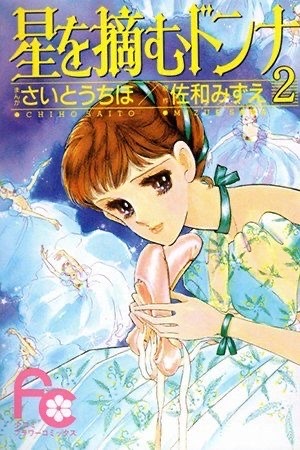
Hoshi Wo Tsumu Donna, by Chiho Saito, 1987.
The story is about an absent minded, innocent girl, Keimi, who goes in a ballad academy and with a sister who’s a famous ballerina, she feels that she’s inferior. But she has a hidden talent in ballet that she cannot yet see. It’s a very enjoyable story.
17 notes
·
View notes